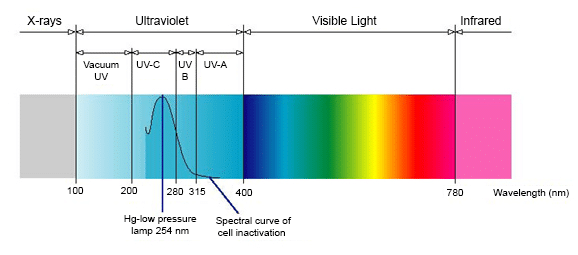By means of ultraviolet light emitted by the UV lamp, the ultraviolet device dissolves the cell structure of microorganisms in water, such as bacteria, viruses, fungi and neutralizes them. The ultraviolet device consists of four parts: a stainless steel body, UV lamp cover, UV lamp and control board. Water penetrates into the stainless steel body, is exposed to UV light and is released from the filter in sterilized form. The procedure of dissolving the DNA and/or RNA structures of microorganisms in water and rendering them harmless by exposing them to ultraviolet lights at 254nm wave length using an ultraviolet disinfection system is called microbiological treatment. Ultraviolet is an effective disinfection method, which eliminates pathogenic and pyrogenic bacteria, viruses, fungi and other microorganisms in water at a rate of 99.999%. Since heat and chemical materials are not used in this method, no change occurs in the flavor and composition of water after disinfection. In order for UV lights to be fully effective, the water must be exposed to a precise filtration process, application must be performed after storing and before the end-use, and a UV system with an appropriate flow rate capacity must be chosen.
Effect of UV lights on microorganisms

Usage Areas
- Food industry
- Cosmetics industry
- Pharmaceutical industry
- Dialyzers Mineral water or natural spring water bottling facilities UV systems are frequently used to prevent bacterial growth on membranes.
- UV systems are frequently used before or after the usage of active carbon filters and water softening devices with resin, which enable bacterial growth.
- UV systems are frequently used in hot water lines.
- In addition to chlorination,
- UV devices can be used against some parasites that have gained resistance to chlorine.
- UV systems are also used in the disinfection of waste water.
